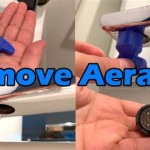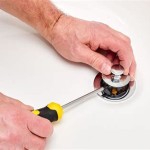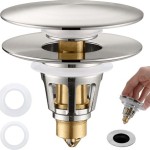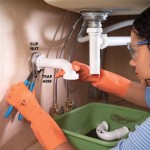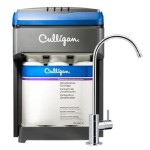Under Kitchen Sink Plumbing Parts
The area beneath the kitchen sink is a hub of plumbing activity, connecting the sink to both the water supply and the drainage system. Understanding the various components and their functions can be beneficial for homeowners when undertaking repairs, maintenance, or upgrades. This article provides an overview of the essential plumbing parts found under a typical kitchen sink.
Shutoff Valves
Shutoff valves control the water flow to the faucet and other appliances connected to the water supply lines. Typically, there are two shutoff valves—one for hot water and one for cold water. These valves are usually located directly beneath the sink, connected to the water supply pipes. They allow for isolating the water supply to the sink, preventing leaks and enabling repairs without shutting off the main water supply to the entire house. Common types include gate valves, ball valves, and compression valves.
Water Supply Lines
Water supply lines deliver water from the shutoff valves to the faucet and other appliances like dishwashers or garbage disposals. These flexible lines are typically made of braided stainless steel, copper, or PEX (cross-linked polyethylene). Stainless steel offers durability and resistance to corrosion, while copper is a traditional choice known for its reliability. PEX is a more recent option gaining popularity due to its flexibility and ease of installation. It's essential to check these lines regularly for leaks or signs of wear and tear.
P-Trap
The P-trap is a U-shaped pipe located beneath the sink drain. Its primary function is to trap water, creating a barrier that prevents sewer gases from entering the house. The trapped water also helps prevent small items, like rings or silverware, from being lost down the drain. The P-trap typically has a cleanout plug at the bottom, allowing for easy removal of clogs and debris. It's crucial that the P-trap is properly installed and maintained to prevent leaks and unpleasant odors.
Drain Pipe
The drain pipe carries wastewater from the P-trap to the main drainage system. This pipe is usually made of PVC (polyvinyl chloride) or ABS (acrylonitrile butadiene styrene) plastic, known for their durability and resistance to corrosion. The drain pipe connects to the P-trap with a slip-joint nut and washer, allowing for adjustments and easy disassembly if necessary. Proper sloping of the drain pipe is essential to ensure effective drainage and prevent clogs.
Faucet Supply Lines
Similar to the main water supply lines, faucet supply lines connect the shutoff valves to the faucet itself. These lines are often shorter and more flexible than the main lines, allowing for easy connection to the faucet inlets. They are usually made of the same materials as the main supply lines, with braided stainless steel being a popular choice due to its appearance and durability. These lines can be a common source of leaks under the sink, so regular inspection is recommended.
Garbage Disposal (Optional)
While not a standard plumbing component, many kitchens include a garbage disposal unit. Installed beneath the sink and connected to the drain, the garbage disposal grinds food waste into small particles that can be safely flushed down the drain. The disposal connects to the drain pipe via a flange and has specific power requirements. It's important to follow manufacturer instructions for proper installation and usage to avoid damage and clogs.
Dishwasher Tailpiece (Optional)
If a dishwasher is installed, a dishwasher tailpiece will be present. This is a small, curved pipe that connects the dishwasher's drain hose to the garbage disposal or the drain pipe directly if a disposal isn't present. It allows wastewater from the dishwasher to flow into the drainage system. The connection is often secured with a clamp to prevent leaks. Understanding the location and function of the dishwasher tailpiece can be helpful for troubleshooting drainage issues with the dishwasher.
Sink Strainer
The sink strainer is the visible part of the drain assembly inside the sink basin. It prevents large food particles and debris from entering the drain pipe. The strainer sits over the drain opening and is secured with a locknut underneath the sink. Strainers come in various styles and finishes to match the sink and faucet. While seemingly simple, a properly installed strainer is crucial for preventing clogs and maintaining smooth drainage.

Parts Of A Sink The Home

Anatomy Of A Kitchen Sink

Kitchen Sink Plumbing How To Make A Drain Better

Under Sink Plumbing At Com

Parts Of A Sink The Home

Kitchen Sink Plumbing Parts

Sink Drain Plumbing

How To Connect A Kitchen Sink Drain

Parts Of A Sink The Home
How To Install A Kitchen Sink Drain
